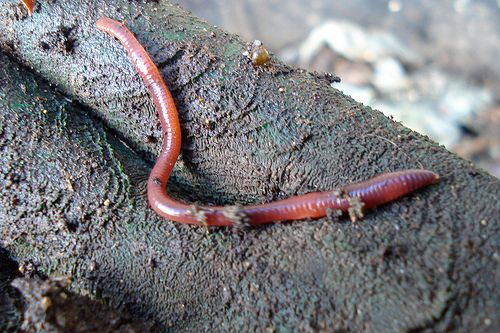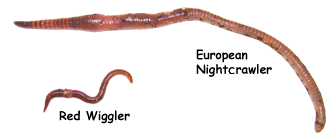Red Wiggler Worms - Effective Decomposers for Your Garden Compost Container
Red Wiggler Worms - Effective Decomposers for Your Garden Compost Container
Blog Article
Red Wiggler Worms Demystified: Opening the Tricks of Vermiculture for Greener Living and Nutrient-Rich Soil
In the world of sustainable practices for enriching dirt top quality and promoting eco-conscious living, red wiggler worms play a critical yet commonly forgotten function. These humble animals possess the remarkable capacity to transform organic waste right into nutrient-rich castings that work as a powerful natural plant food. By delving right into the world of vermiculture, one can discover a myriad of benefits that prolong far past standard composting methods. Recognizing the complexities of caring for these worms, maximizing their setting, and harnessing their spreadings can result in a greener way of living and healthier dirt for plants to grow.
The Function of Red Wiggler Worms
Red Wiggler worms play an essential role in composting systems by effectively damaging down raw material into nutrient-rich castings. These starved eaters eat a variety of organic products, such as cooking area scraps, yard waste, and paper products. As they feed, the worms' digestive processes break down the raw material right into a fine, dark, and nutrient-dense material understood as worm spreadings or vermicompost.
The spreadings generated by Red Wiggler worms are highly advantageous for dirt wellness and plant development. They are abundant in important nutrients like potassium, phosphorus, and nitrogen, which are crucial for sustaining healthy and balanced plant growth. In addition, worm spreadings have helpful microbes and enzymes that help enhance soil structure, boost water retention, and improve nutrient uptake by plants.
Advantages of Vermicomposting

It enhances dirt framework, boosts dirt oygenation, and increases dirt dampness retention. Vermicompost also improves the dirt with important nutrients like phosphorus, nitrogen, and potassium, advertising plant development and overall dirt fertility.
Additionally, vermicomposting supports sustainable horticulture techniques by providing a chemical-free and all-natural option to artificial plant foods. Red Wiggler Worms. This eco-friendly technique not only improves the dirt but also helps in reducing dependence on dangerous chemicals, advertising a greener and extra lasting means of horticulture
Establishing a Worm Container
When developing a worm container for vermicomposting, correct configuration is crucial to ensure the success of the composting procedure. The very first action in setting up a worm bin is picking an ideal container.
After adding the bedding, present the red wiggler worms to the container. The worms should then be given with food scraps such as fruit and vegetable peels, coffee premises, and eggshells.
Regularly check the wetness degrees and temperature level in the worm bin to make certain optimal conditions for the worms. With appropriate arrangement and maintenance, the worm container will successfully transform organic waste right into nutrient-rich compost for your plants and yard.
Harvesting Worm Castings
To efficiently gather nutrient-rich worm spreadings from your vermicomposting system, a methodical harvesting approach is important. When it comes time to collect the worm castings, there are a couple of vital steps to comply with to make certain a successful procedure. Firstly, stop including fresh food scraps away of the worm container for a couple of weeks before harvesting. This urges the worms to move sideways with fresh bedding and food, making it much easier to dig the spreadings from the other side.

Troubleshooting Common Issues
Recognizing and attending to common difficulties that might develop throughout the vermicomposting webpage process is crucial for maintaining a effective and healthy worm container. One common issue that vermicomposters experience is overfeeding. Adding excess food scraps can lead to a buildup of dampness and level of acidity in the worm container, possibly damaging the worms. To avoid this, feed the worms in moderation, making sure that the food scraps are appropriately damaged down prior to including more. An additional concern is unpleasant smells originating from the worm container. Foul smells suggest anaerobic conditions, generally triggered by overwatering or insufficient air flow. To fix this, readjust the wetness levels by including completely dry bed her latest blog linens materials like shredded newspaper or cardboard and rise aeration by transforming the bed linen frequently.
Additionally, if the worm population is decreasing or the worms show up harmful, it can be as a result of environmental stress factors such as severe temperatures or pH degrees. Keeping track of these elements and making necessary modifications is important for the wellness of the worms. By repairing these typical issues quickly, vermicomposters can make sure a successful and smooth vermicomposting process while keeping a thriving worm population.

Final Thought
In final thought, red wiggler worms play an important role in vermiculture by breaking down natural issue right into nutrient-rich soil. Establishing up a worm bin is crucial for effective vermiculture, and gathering worm castings offers useful garden compost for gardening.
As they feed, the worms' digestive system procedures damage down the natural issue right into a penalty, dark, and nutrient-dense product known as worm castings or vermicompost.
The spreadings created by Red Wiggler worms are very useful for soil health and wellness and plant development. Adding excess food scraps can lead to a buildup of wetness and acidity in the worm bin, possibly harming the click here for more worms.Furthermore, if the worm population is decreasing or the worms show up harmful, it might be due to ecological stress factors such as extreme temperature levels or pH degrees. Establishing up a worm bin is essential for successful vermiculture, and collecting worm castings provides valuable garden compost for gardening.
Report this page